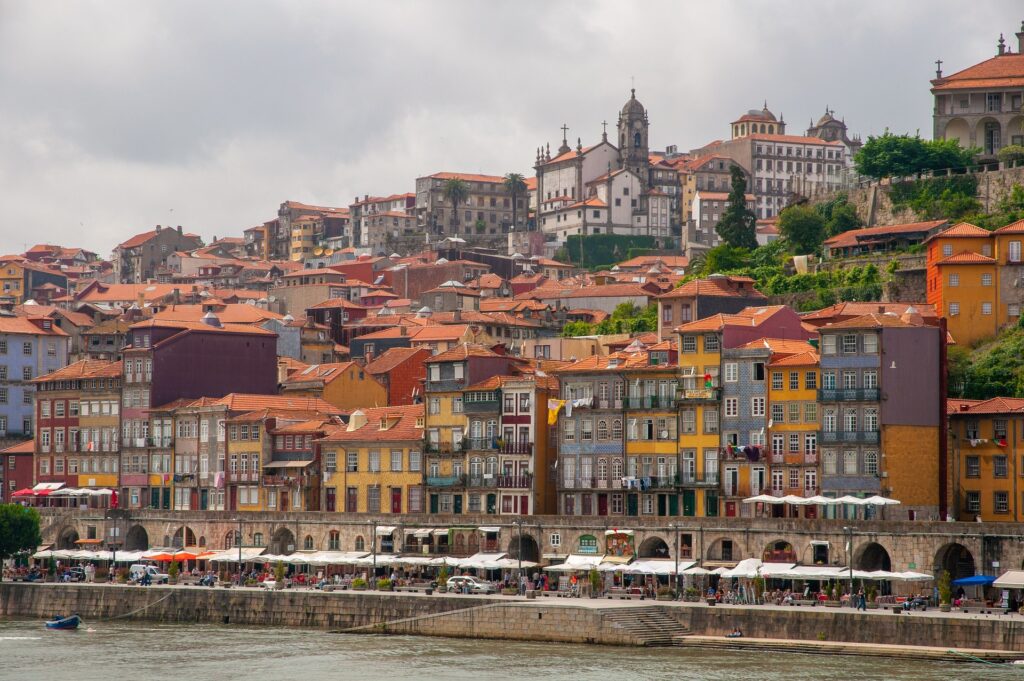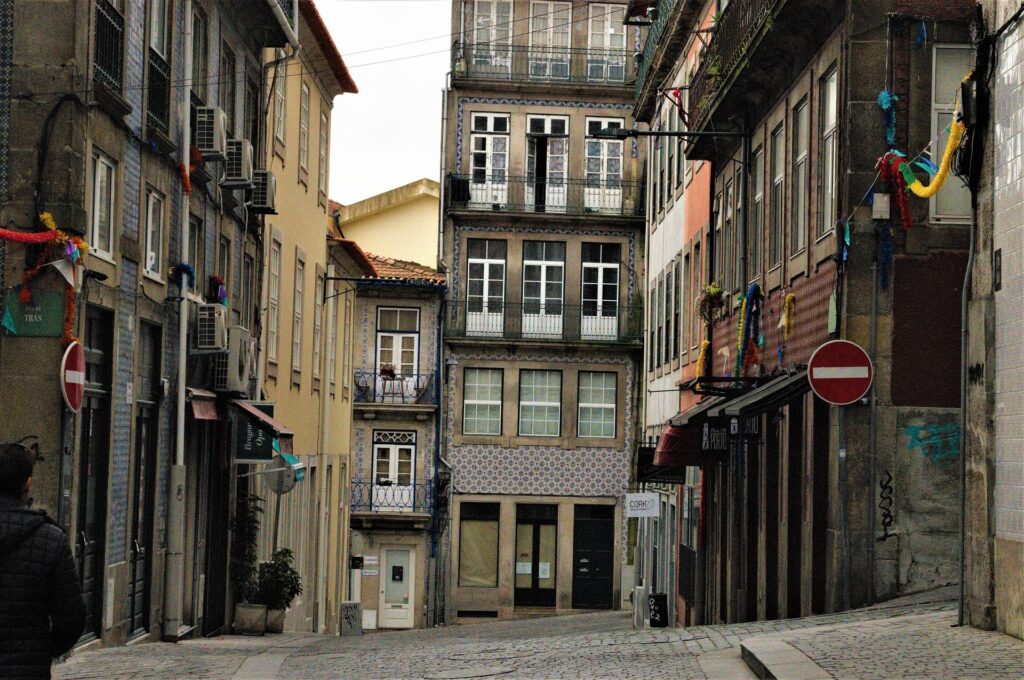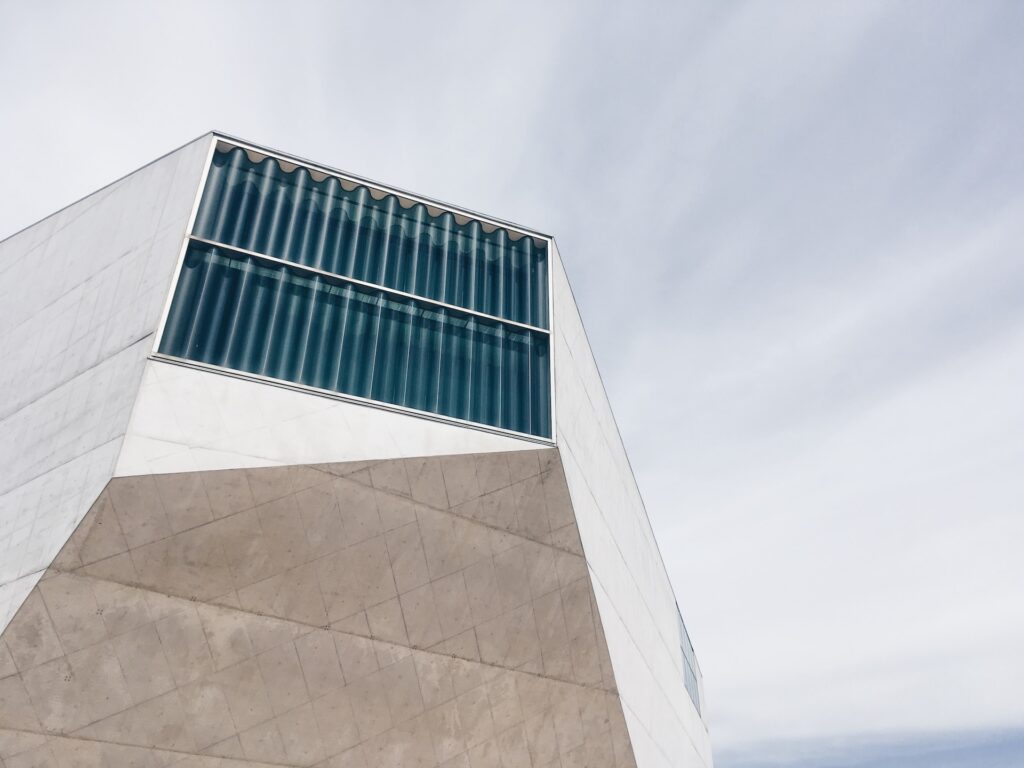Top areas to reside in Porto, a city steeped in history, nestled along the captivating Douro River, has fast become a sought-after destination for expatriates seeking a harmonious blend of rich culture, picturesque landscapes, and a welcoming community. For those considering the possibility of calling Porto their new home, the critical question arises: Where should one settle in this city of both tradition and innovation?
In this comprehensive guide, we embark on a journey to uncover the top areas in Porto for expats to reside. From the tranquil coastal retreats to the lively urban hubs, we will navigate through the neighborhoods that cater to various preferences and lifestyles.
Whether you seek historic authenticity, vibrant city living, or the serenity of the seaside, we’ve curated a list of Porto’s most expat-friendly locales to assist you in making an informed decision about your new home in this magnificent Portuguese gem.
Why expats are moving to Porto? Top areas to reside in Porto
Expats are moving to Porto for several reasons. Firstly, the city is known for its rich history, stunning architecture, and vibrant culture, making it an attractive destination for those looking to experience the best of Portugal. According to Pordata, Porto has a total population of 1,749,558, with 57,970 foreigner residents, accounting for 3.3% of the population.
Porto is also a relatively affordable city compared to other European capitals, with a lower cost of living and affordable housing options. The city also has a thriving food and wine scene, with many traditional restaurants and local wineries offering a taste of the region’s famous cuisine.
The city is also a hub for business and entrepreneurship, with several successful startups and innovative companies based in the city. The D2 Visa, also known as entrepreneur Visa has made it possible for foreign investors contributing to the growth of the Portuguese economy.
For expat families living in Porto, there are several international schools available that provide education in English and follow recognized curriculums.
The historic Top areas to reside in Porto
Ribeira
Ribeira is one of the most iconic neighborhoods in Porto, known for its historic charm and stunning riverside location along the Douro River. Expats moving to Ribeira will find themselves immersed in the city’s rich history, with narrow cobbled streets, colorful buildings, and picturesque views of the Dom Luís I Bridge. The neighborhood is a hub for traditional Portuguese culture and local cuisine, offering a wide range of authentic restaurants and cozy wine bars.
While Ribeira is a fantastic place for expats who appreciate the ambiance of a historic setting, it can be crowded with tourists during peak seasons, and some parts may lack modern amenities.
Pros of living in Ribeira
- Rich historical charm with picturesque streets and riverside location.
- Close proximity to iconic landmarks and cultural attractions.
- Waterfront restaurants and beautiful views of the Douro River.
Cons of living in Ribeira
- High tourist traffic during peak seasons.
- Limited modern amenities in some areas.
- Potential for noise and congestion during the day.

Sé
Sé is the heart of Porto’s historic center and home to the city’s impressive cathedral. Expats residing in Sé will enjoy living amidst the medieval atmosphere, with its narrow streets, historic churches, and quaint squares.
The neighborhood’s central location provides easy access to key attractions, cultural events, and local markets. While Sé offers a rich cultural experience, it may be less tranquil than other neighborhoods due to its central location and the influx of tourists during the day.
Expats seeking a dynamic urban lifestyle with a strong historical and cultural presence will find Sé an excellent choice.
Pros of living in Sé
- Central location with access to key attractions.
- Rich historical and architectural heritage.
- Strong sense of community and local charm.
Cons of living in Sé
- Potential for high noise and tourist traffic.
- Limited parking and accessibility in some areas.
- May lack the modern conveniences of newer neighborhoods.

Miragaia
Miragaia is a picturesque and tranquil neighborhood in Porto, situated along the riverfront and just a stone’s throw from the historic Ribeira district. Expats who choose Miragaia will appreciate its scenic promenade, offering breathtaking views of the Douro River and the iconic Ribeira skyline.
The neighborhood is known for its charming buildings, local seafood restaurants, and a relaxed atmosphere. It’s an excellent option for those who value a serene and authentic setting while still being within walking distance of the city’s main attractions.
However, some parts of Miragaia may have limited accessibility and modern amenities, which can be a trade-off for its peaceful ambiance.
Pros of living in Miragaia
- Scenic riverside location with beautiful views.
- Quaint and peaceful ambiance.
- Close proximity to historic Ribeira and the city center.
Cons of living in Miragaia
- Limited accessibility in some areas.
- Fewer amenities and modern conveniences.
- Less vibrant compared to busier districts.

Cordoaria
Cordoaria is a trendy and culturally vibrant neighborhood in Porto, known for its eclectic mix of modern and historic elements. Expats drawn to Cordoaria will find themselves surrounded by contemporary art galleries, stylish boutiques, and an array of cafes and restaurants.
This district is close to the city center, making it convenient to explore Porto’s historical landmarks. It’s also a hub for artistic events and cultural happenings, with many music venues and theaters nearby.
While Cordoaria offers a cosmopolitan and creative environment, the cost of living can be on the higher side, and the district can be lively and bustling, particularly during the evenings.
Pros of living in Cordoaria
- Lively and culturally vibrant atmosphere.
- Eclectic mix of modern and historic elements.
- Proximity to art galleries, boutiques, and cafes.
Cons of living in Cordoaria
- Higher cost of living and potential for noise.
- Crowded streets and limited parking.
- May not suit those seeking a more tranquil environment.

Commercial and Business areas in Porto
Baixa
Baixa, the downtown area of Porto, is a bustling commercial and historical district that appeals to expats looking for a central location. It’s characterized by grand squares, historic buildings, and a wide range of shops, restaurants, and services.
As an expat in Baixa, you’ll have everything at your doorstep, from iconic landmarks like the Clérigos Tower to modern shopping centers. The neighborhood is well-connected by public transport, making it easy to explore the city.
However, the central location can also make it crowded, and the cost of living may be higher than in more residential areas.
Pros of living in Baixa
- Central location with easy access to key landmarks.
- Historic charm, grand squares, and architectural beauty.
- Wide range of shops, restaurants, and services.
Cons of living in Baixa
- Crowded and busy during the day.
- Higher cost of living in central areas.
- Limited green spaces and less tranquil compared to residential neighborhoods.

Aliados
Aliados is another central neighborhood in Porto, famous for its stunning Avenida dos Aliados, a grand boulevard lined with historic buildings and monuments. Expats who choose Aliados will appreciate the district’s proximity to key attractions, cultural venues, and government offices.
The neighborhood is a hub for local events and festivals, making it a vibrant place to live. While Aliados offers an exciting urban lifestyle, it may have a higher cost of living compared to some of the more residential neighborhoods in Porto.
Additionally, some parts can be busy and noisy, especially during special events and festivals held in the area.
Pros of living in Aliados
- Iconic Avenida dos Aliados with stunning architecture.
- Vibrant events, festivals, and cultural venues.
- Central location with access to amenities and services.
Cons of living in Aliados
- Potential for noise and congestion, especially during events.
- Higher cost of living in central areas.
- May be less tranquil compared to residential neighborhoods.

Bolhão
Bolhão is a traditional and lively neighborhood in Porto, known for its historic market, Mercado do Bolhão. Expats moving to Bolhão will be immersed in the everyday life of Porto, with bustling markets, local shops, and a strong sense of community.
The district is home to a mix of cultural and culinary diversity, from fresh produce stalls to family-owned eateries. Bolhão’s central location ensures that you’re well-connected to the city’s amenities and services, making it an attractive choice for those who want to experience authentic Porto.
However, some areas may lack the modern amenities and conveniences found in more contemporary neighborhoods.
Pros of living in Bolhão
- Authentic and lively neighborhood.
- Local markets, shops, and community spirit.
- Central location with access to the heart of Porto.
Cons of living in Bolhão
- Limited modern amenities in some parts.
- Potential for noise in busy areas.
- Fewer green spaces compared to more tranquil neighborhoods.

Cedofeita
Cedofeita is a diverse and vibrant neighborhood in Porto, attracting expats who want to experience the city’s dynamic urban life. This district is known for its bustling streets, quirky boutiques, and a rich cultural scene.
As an expat in Cedofeita, you’ll have access to an array of restaurants, cafes, and art galleries, making it a hub for artists and creatives. The neighborhood’s central location ensures easy access to major landmarks and public transportation.
While living in Cedofeita is exciting and offers a true taste of Porto’s contemporary spirit, it can get quite busy, and some areas may be noisy due to its urban hustle and bustle.
Pros of living in Cedofeita
- Diverse and dynamic atmosphere.
- Proximity to contemporary art galleries and boutiques.
- Convenient access to the city center and amenities.
Cons of living in Cedofeita
- Potential for noise and congestion in some areas.
- Higher cost of living in trendy sections.
- Limited green spaces compared to more residential neighborhoods.

Upscale residential Top areas to reside in Porto
Boavista
Boavista is a dynamic and modern neighborhood in Porto, offering a blend of residential and commercial spaces. Expats looking for a well-connected and upscale lifestyle will find Boavista appealing.
The district features wide avenues, contemporary architecture, and upscale shopping centers, such as El Corte Inglés. Boavista is also home to cultural attractions like the Serralves Foundation, which hosts art exhibitions and beautiful gardens.
While living in Boavista provides a comfortable urban experience, it may come with a higher cost of living compared to some other neighborhoods in Porto. Additionally, the district can be bustling and busy, especially during the day, as it is a commercial and financial hub.
Pros of living in Boavista
- Modern and well-connected neighborhood.
- Upscale shopping centers and contemporary architecture.
- Proximity to cultural venues and art galleries.
Cons of living in Boavista
- Higher cost of living in certain areas.
- Potential congestion and noise, especially during business hours.
- May have less character compared to historic districts.

Foz
Foz is a prestigious and upscale neighborhood in Porto, offering a luxurious and tranquil lifestyle by the sea. Expats who choose to live in Foz will enjoy the picturesque Atlantic Ocean views and sandy beaches, providing the perfect backdrop for leisurely walks and water sports.
The neighborhood boasts elegant tree-lined streets, stately homes, and high-end dining options. Foz offers a relaxing ambiance while still being within easy reach of the city center, making it a preferred choice for expats seeking a combination of modernity and a coastal retreat.
However, it’s important to note that the cost of living in Foz can be higher than in other areas of Porto, and the availability of housing may be limited.
Pros of living in Foz
- Luxurious and tranquil lifestyle by the sea.
- Stunning beaches, ocean views, and upscale dining.
- Proximity to the city center with a coastal retreat.
Cons of living in Foz
- Higher cost of living, particularly near the coast.
- Limited availability of housing.
- Potential for congestion during peak tourist seasons.

Matosinhos
Matosinhos is a vibrant coastal neighborhood located just to the north of Porto, known for its relaxed atmosphere and strong connection to the sea. Expats moving to Matosinhos will appreciate the stunning beaches, fresh seafood restaurants, and a bustling fishing port.
The neighborhood has a strong sense of community and offers a variety of outdoor activities, from surfing and sunbathing to bike rides along the promenade. Matosinhos is a thriving food hub with some of the best seafood restaurants in the region, offering a taste of Portuguese cuisine at its finest.
It provides a more affordable living option than central Porto, making it an attractive choice for expats who desire a beachside lifestyle while still having easy access to the city.
Pros of living in Matosinhos
- Lively coastal neighborhood with strong community ties.
- Fresh seafood restaurants and outdoor activities.
- More affordable living compared to central Porto.
Cons of living in Matosinhos
- Further from the city center, requiring longer commutes.
- Potential for tourist congestion, particularly during summer.
- Fewer cultural and historical landmarks compared to the city center.
How much does it cost to buy a property in Porto?
According to the data from Idealista, the largest online real estate platform, the average price per square meter for buying a property in Porto in April 2023 is approximately €3,387. This means that a 100 square meter apartment in Porto would cost around €338,700 on average. However, this average price can vary significantly depending on the location of the property.
How can I move to Porto?
EU Citizens
If you intend to stay in Porto for more than three months, it is mandatory to apply for a registration certificate. The application can be submitted upon arrival in the country, and once approved, the certificate is valid for up to five years.
Non-EU Citizens
If you are a non-EU national planning to reside in Porto, you must apply for a Portuguese residency visa before your arrival. After your visa expires, you will be required to obtain a residence permit.
Portugal D7 Visa - Passive income holders
An attractive option for many retirees who want to avoid the high costs of living in their home country is the D7 visa, which allows for living in Lisbon.
Portugal D8 Visa - Digital Nomad workers
You can choose to live in Lisbon under the Digital Nomad Visa. It’s a popular route for many digital nomads and remote workers.
D2 Visa Portugal - Gateway for entrepreneurs
You can live in Portugal and take advantage of a supportive ecosystem, as well as a range of qualified professionals in multiple sectors through the D2 Visa.

Advantages of living in Porto
Culture and History: Porto is a city rich in culture and history, with beautiful architecture, museums, galleries, and theaters. There is always something to do and see in the city, from visiting the famous Port wine cellars to exploring the charming medieval streets of the Ribeira neighborhood.
Food and Drink: Porto is known for its delicious food and drink, including Port wine, fresh seafood, and traditional dishes like Francesinha. There are also plenty of restaurants, cafes, and bars to explore, ranging from high-end fine dining to casual street food.
Affordable Living: Compared to other European cities, Porto is relatively affordable to live in, with lower housing costs, transportation costs, and food costs. This makes it an attractive option for expats and students on a budget.
Location: Porto is located in a beautiful region of Portugal, with easy access to stunning beaches, mountains, and countryside. It is also well-connected to other major cities in Portugal and Europe, with an international airport and high-speed train connections.
Disadvantages of living in Porto
Weather: Porto can experience rainy and chilly weather, especially during the winter months. Summers can also be hot and humid, making it uncomfortable for some people.
Language Barrier: While many people in Porto speak English, Portuguese is the main language, and not everyone may speak English fluently. This can make it difficult for expats who do not speak the language to navigate daily life.
Tourist Crowds: Porto is a popular tourist destination, especially during the summer months, which can make the city feel crowded and overwhelming at times.
Transportation: While Porto has a well-connected public transportation system, including buses and metro lines, traffic can be congested, and the roads can be challenging to navigate for those not familiar with the city.

Why work with Portugal Residency Advisors?
Local Expertise
We know Portugal. Due to our extensive local knowledge, we believe that concentrating our services in a single country destination is the best way to give you the most thorough and useful information.
Holistic Approach
One single channel of communication for the entire process. We provide you with a comprehensive service that covers all aspects of your move, from identifying the ideal residency visa to finding your new home or helping you to settle.
Transparent Service
We recommend what’s best for you based on an extensive process experience that saves time and money to clients. Our pricing is clear and competitive, and we don’t sell services that make us more money.
Simple Process
Technology plays a very important role in our company. We minimize our clients’ involvement in paperwork. We are customers ourselves and we know how to serve you.
Frequently Asked Questions About The Top Areas for Expats to Reside in Porto
What are the most popular neighborhoods for expats in Porto?
Popular neighborhoods include Foz do Douro (coastal living), Cedofeita (trendy and artistic), Ribeira (historic charm), Boavista (modern and central), and Campanhã (up-and-coming with good transport links).
Is Foz do Douro a good area for expats?
Yes, Foz do Douro is a favorite among expats looking for a high-quality lifestyle. It offers beautiful ocean views, a relaxed atmosphere, and excellent restaurants and cafes.
Which neighborhood in Porto is best for families?
Boavista and Foz do Douro are ideal for families, offering safe residential areas, parks, international schools, and family-friendly amenities.
Where do digital nomads and young professionals live in Porto?
Cedofeita and Baixa are popular among digital nomads and young professionals due to their vibrant atmosphere, coworking spaces, affordable housing, and access to cafes and cultural activities.
What is the most affordable area for expats to live in Porto?
Areas like Bonfim and Campanhã are more budget-friendly, offering lower rents while still being close to the city center and well-connected by public transport.
Which areas in Porto offer the best cultural and historic experiences?
Ribeira and Sé are steeped in history, featuring cobbled streets, iconic landmarks, and traditional Portuguese architecture that immerse residents in Porto’s cultural charm.
Are there luxury living options in Porto?
Yes, neighborhoods like Foz do Douro and Boavista offer luxury apartments, upscale villas, and premium amenities, making them ideal for expats seeking an exclusive lifestyle.
What neighborhoods in Porto have the best transport connections?
Campanhã and Bonfim have excellent transport links, including access to Porto’s metro, trains, and major highways, making commuting and travel very convenient.
Are there international schools near expat-friendly neighborhoods in Porto?
Yes, areas like Foz do Douro and Boavista are close to top international schools such as the Oporto British School and the CLIP – The Oporto International School.
Which neighborhoods are ideal for nature lovers and outdoor enthusiasts?
Foz do Douro and Parque da Cidade provide easy access to Porto’s coastline, the Douro River, and large green spaces, perfect for walking, cycling, and outdoor activities.
What visa options are available for moving to Porto?
Portugal offers several visa options for expats, such as the D7 Visa (passive income/retirement), Golden Visa (investment-based), and the D2 Visa (entrepreneurs and freelancers). EU citizens can move to Porto without a visa.
What documents are required for immigration to Porto?
Typically, you’ll need a valid passport, proof of income or financial means, health insurance, and, for long-term visas, a clean criminal record and accommodation proof in Porto.
How long does it take to get a residence permit in Porto?
Once you arrive in Portugal, you must apply for a residence permit through AIMA (Immigration Authorities). The process can take a few weeks to a few months, depending on the visa type and appointment availability.
Is Porto an affordable city for new immigrants?
Yes, Porto is more affordable than many European cities. Housing, transportation, and groceries are reasonably priced, though popular neighborhoods can be pricier.
What are the key benefits of immigrating to Porto?
Porto offers a high quality of life, a low cost of living, safety, excellent healthcare, beautiful architecture, and access to the stunning Douro Valley. Its growing expat community also makes settling in easier.




